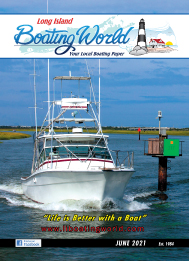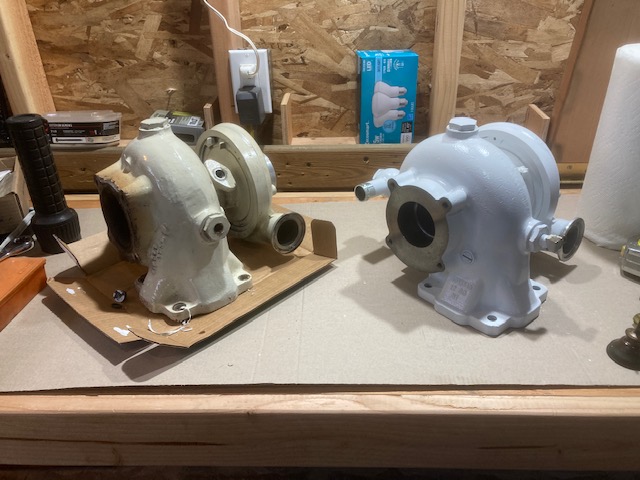
No, I’m not talking about a dead battery, nor am I asking for a sip of your energy drink. I am talking about the boost pressure from the turbocharger that supplies the large amount of air engines need to make serious horsepower from a smaller displacement.
It all started in the Spring of 2013. I was getting the boat ready to be launched and as is my habit, I removed both air cleaners and used my finger to spin the turbocharger, making sure they were good. The starboard engine turbocharger spun easily. Unfortunately, the port engine turbocharger did not. I could force it with my finger but I could hear the turbine blades hitting against the housing. That is not supposed to happen.

After draining the coolant from the engine, I took off the turbocharger with the exhaust elbow still attached since I could not separate them on the boat with the tools I had. Once home with tools and a workbench, I was able to take the entire assembly apart. I found the exhaust side of the turbocharger housing to be highly corroded. The housing had rusted up considerably and that kept the turbine from spinning. I was able to take the housing to an automotive machine shop and they sandblasted it removing all the rust. The reason it rusted was that the exhaust elbow had started leaking water that got into the turbocharger. After repairing the housing and having the elbow rebuilt I put everything back together almost as good as new.
Fast forward to the end of the 2020 boating season. Sometime in late August, I noticed my port engine was lagging behind while I was accelerating. I also started seeing more black smoke while accelerating. I started several tests on the engine including fuel pressure and as a last resort boost pressure. I hooked up a pressure gauge first to the starboard engine and then to the port engine to take boost pressure readings over the entire RPM range of the engine. I found that the port engine turbocharger was down over six pounds of boost pressure compared to the other engine, and had significant fluctuations of pressure. I knew I needed a turbocharger.
Over the winter I purchased a new Cummins turbocharger, painted it, and adjusted the intake and exhaust ports to line up with the engine ports. This April I was able to uncover the boat and get started on the replacement. Taking off the old turbocharger was not a particularly hard job. As long as you were a contortionist! There is not much room around the engines in my boat, but after removing the exhaust pipe, air piping, coolant and some other odds and ends I was able to take off the part. I took it home to make sure the new one lined up correctly and also to remove a few parts and transfer them to the new one.
Having both the old and new turbochargers on the bench gave me a great opportunity to compare them. Looking into the exhaust outlet port of both units gave me a clue as to why I was having engine problems. On the new turbocharger, the clearance between the housing and the turbine blades is very small, maybe as thick as a matchbook cover. Looking at the old one, it was immediately clear what the problem was. The clearance between the housing and blades on the bottom was only slightly increased from the new unit. But at the top of the housing, the clearance was easily tripled, it was almost 1/8 of an inch. That was the cause of the lower boost pressure and pressure fluctuations we observed on the gauge while testing.
Once I had the new turbocharger adjusted like the old one, I headed out to install it. This was a straightforward installation, clean up all the gasket surfaces and hook up the oil supply line, water lines, air supply line and lastly the exhaust elbow and exhaust tube. Once it was torqued to specifications I added the engine coolant and got everything ready to start up.
As of now I still have not started the engine but by the time you read this, I will have tested the engine and should be in the water. I have a few other things to do first including checking on my propellers. As I was cleaning the propeller shafts to install the new shaft zincs I noticed the port propeller was loose so I need to go and tighten that up. I installed all new zincs in the engines, on the trim tabs, hull and propeller shafts. The boatyard has painted the bottom, and when I go there I will paint the running gear with zinc paint. This helps keep barnacles at bay.
As a present the family is having the boat waxed and detailed, so I am off the hook with that. I am not sure what I’ll do with all this free time, but maybe I’ll see you out on the water!
